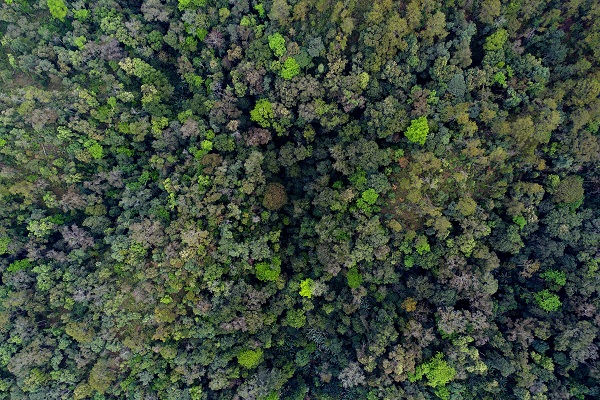Co-occurrence of numerous closely related species at a local scale is a hallmark of diverse tropical forests. However, identifying the factors that permit closely related species to co-exist in species-rich tropical forests continues to be a major challenge in ecology.
In a study published in Journal of Ecology, researchers from Xishuangbanna Tropical Botanical Garden (XTBG) tried to identify the key axes of variation that contribute to the high local diversity of trees in a single plant family (Euphorbiaceae) in a local community.
The researchers measured 40 functional traits related to resource acquisition, photosynthetic capacity, hydraulic conductivity and efficiency, and secondary-metabolite profiles for all 26 free-standing woody species of Euphorbiaceae in a 20-ha forest dynamics plot in tropical seasonal rain forest in Xishuangbanna, SW China.
Using a trait networking approach, the researchers examined the correlation structure of interspecific variation among the 40 traits and interspecific variation in leaf secondary metabolites by using untargeted metabolomics. They coupled those traits with detailed measurements of variation in soil nutrients, light environment, soil water content and herbivore pressure to identify the axes of trait variation that may define niche differences among co-occurring woody Euphorbiaceae.
The study found substantial differentiation in trait dimensions related to photosynthetic, hydraulic, resource-acquisition and defensive strategies with the potential to contribute to species coexistence by allowing species to segregate with respect to variation in resource availability and herbivore pressure over time and space
“Our results suggest that resource-utilization traits and the habitat associations play a significant role in the niche segregation of co-occurring woody plants in the Euphorbiaceae. Secondary metabolites, however, may enhance diversity at a finer spatial scale by allowing closely related species with similar functional traits to partition biotic niche space within shared habitats in tropical rainforest,’ said YANG Jie of XTBG.
Contact
YANG Jie or ZHANG Jiaolin Ph.D Principal Investigators
Key Laboratory of Tropical Forest Ecology, Xishuangbanna Tropical Botanical Garden, Chinese Academy of Sciences, Mengla, Yunnan 666303, China
E-mail: yangjie@xtbg.org.cn or zjl@xtbg.org.cn

20-ha forest dynamics plot in tropical seasonal rain forest in Xishuangbanna. (Image by XTBG)

